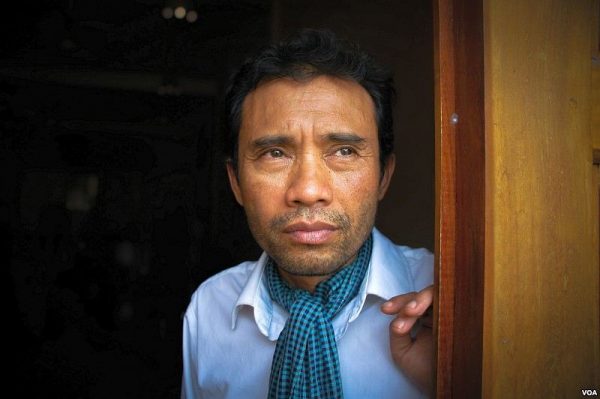As Cambodia observes its National Day of Remembrance, a survivor of the Khmer Rouge era shares his story.
By Arpita Mitra
May 20, 2020
The Diplomat

Credit: VOA/Irwin Loy
Sitting inside the dimly-lit reception area of the Cambodian Living Arts (CLA) in Phnom Penh, I nervously took note of the time: nearly 45 years since the Khmer Rouge came to power; almost 40 years since his escape and journey toward survival; 20 years since the inception of the Cambodian Living Arts, and merely an hour-and-a-half to capture it all through the inadequacy of words. Amidst the discomforting silence that was occasionally interrupted by the pacing steps of the CLA artists and staff across the hall, my knees rocked to the sound of every passing second on the wall clock as I became overwhelmed by the time that was weighing on me.
Arn Chorn-Pond is the founder of the Cambodian Living Arts and a celebrated musician, he’s also known as one of the few children who survived the atrocities of the Khmer Rouge era (1975-79). Truth be told, upon meeting him, I reckoned much less about his celebrated status that had until then, made its way into my scribbled notes. Instead, I was drawn more toward the air of humility that adorned Arn; in addition to wearing his larger-than-life laugh and the checkered-printed krama around his neck, with woven colors that appeared to alternate much like his experiences of resilience and despair. I soon came to realize that his story – tantamount to the collective history of the people in Cambodia and their efforts (or lack of) to deal with past atrocities – was akin to photographic memories; so vivid that they did not need my words to be revived.
Below are excerpts from that interview, edited lightly for length and clarity.
On Childhood
The pain is still afresh, even though it was decades ago. I was separated from my family around the age of 9-10 years. I have only a brief recollection of my parents as they used to own an Opera Company back in the days. But music was the soul, the roof of our lives. I remember going to movies with my little brothers and sisters, eating ice-cream, singing love songs and carelessly dancing to the tunes of rock-and-roll. That childhood was short-lived. Soon after, children like me were forcibly removed from their homes and taken to the labor camp so they could be trained and brainwashed. Nearly 700 children starved to death, and I painfully witnessed the slow demise of my own brothers and sisters.
Enjoying this article? Click here to subscribe for full access. Just $5 a month.
End of an Era
Under the Khmer Rouge, artists were among the first to be attacked – their free-spirited ways of being were contrary to what the Khmer Rouge wanted to establish by means of brainwashing. Traditional music was banned as it was a reminder of the “bad” or “corrupt” past; artists were killed and musical instruments were destroyed. In fact, nearly 90 percent of all performing artists of that period were killed – it was almost an end of an era. What was worse was how music and the arts were used as a double-edged sword – the Khmer Rouge not only destroyed the positive influence of artists, but also used some of their musical instruments as weapons for propaganda purposes.
Survival Music
Playing music saved my life – something that I realized 25 years later. Literally, I was spared from the killings because the Khmer Rouge noticed early on that I was good at playing the khim – the Khmer hammered dulcimer – and was soon enrolled in a music band to play propaganda songs about the revolution, about rice, about the glory of Angka – things that had no meaning for me.
But equally, music helped me survive. Looking back, growing up during this period was confusing for children – children who were forced to watch the killing of prisoners, day in and day out; at a time, when every little action was a judgment call around life and death. As a result, what remained of your childhood were the sounds of the killings – people being hit on the back of the head until you could hear the skull crack; the lingering smell of the dead bodies that were dumped in the adjacent mango grove and the stillness of the moments, as you eventually learned to make yourself numb to such every day events.
The Khmer Rouge used to strategically put a microphone that would echo our music on to the loudspeaker so that the killing sounds were muted in the background. Still, I could hear the moaning voices of the prisoners who were killed – I did not know how to express the horror of what I was witnessing. The only way I could cope was by playing the khim as fast as possible – so fast, it was almost identical to the pace of my panicking heartbeat.
Read more here.
